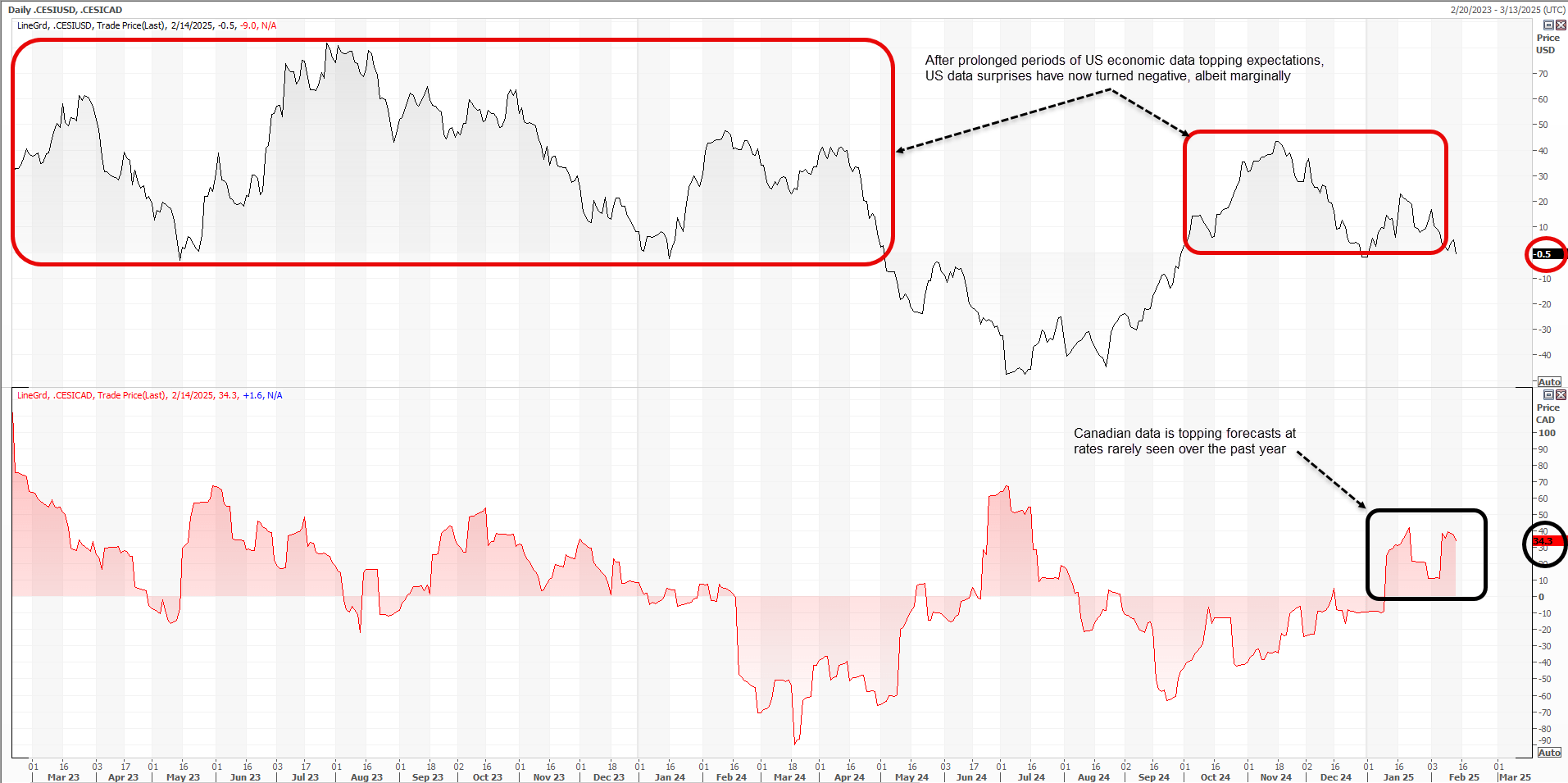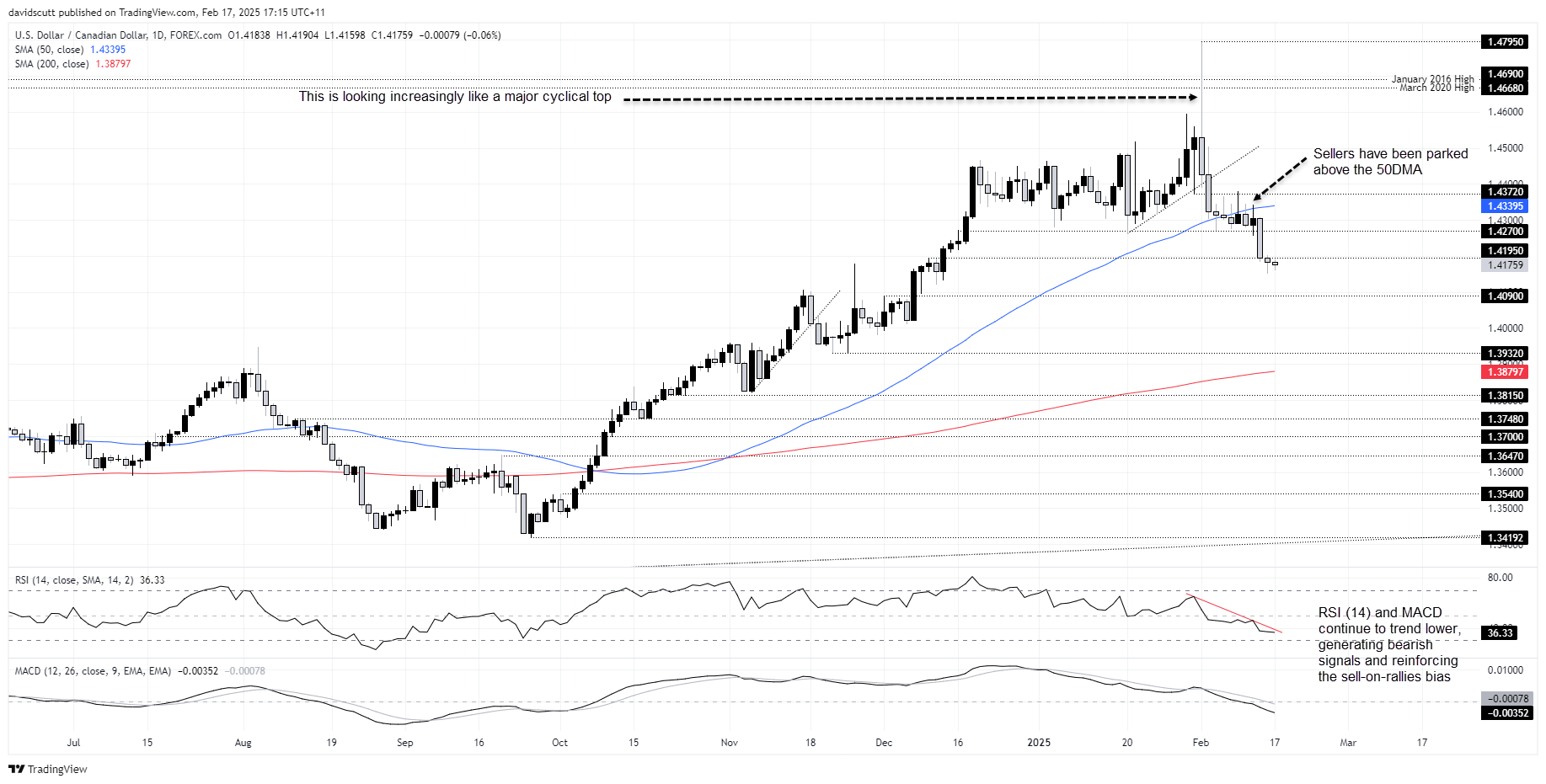- USD/CAD pressured as US data softens and the Canadian economy outperforms.
- Tariff concerns a fading force in driving USD/CAD volatility.
- Canadian inflation looms, but GST distortions may limit its impact on the trend.
Summary
USD/CAD is trading heavily ahead of Tuesday’s Canadian inflation report, weighed down by softer US economic data and fading sticker shock from US trade policy headlines. With Canadian data impressing at rates not seen since mid-2024 and February's steep reversal from 22-year highs increasingly resembling a cyclical top, the key question now is whether this marks the start of a more significant unwind of earlier USD/CAD gains.
US Economic Exceptionalism Wavering
US economic exceptionalism—you’ve no doubt heard the phrase often in recent years. Of all the world’s advanced economies, the US has consistently outperformed while others have struggled. Even with what the Fed considered highly restrictive monetary policy and a strong dollar, US growth has not only held up but remained at levels that, historically, could reignite inflationary pressures.
But is the tide turning on that narrative?
It’s hard to say definitively—and it’s certainly not the Trump Administration’s plan—but some recent signals suggest the story may be shifting.
Citi’s US economic surprise index—shown in the chart below—questions the economic exceptionalism tag, having slipped into negative territory after last Friday’s significant US retail sales miss for January. While the index only measures data performance relative to forecasts—not actual activity, which remains robust—it still plays a key role in shaping sentiment around the US economy, interest rates, and the dollar. Source: Refinitiv
Source: Refinitiv
The same applies to other nations. Canada’s economic surprise index, shown in the bottom pane above, indicates its data is now beating expectations at rates rarely seen in the past year.
North of the border, expectations were likely so low that upside surprises became inevitable. South of the border, persistent outperformance and optimism around pro-growth policies meant that even decent US data now often fails to impress.
USD/CAD: Cyclical Peak Hit?
Put the two trends together and it’s no surprise USD/CAD has backed away from recent highs. More than that, the sharp reversal from 22-year highs in early February increasingly looks like a cycle peak. Sticker shock from tariff threats is fading just as relative economic performance narrows, leaving USD/CAD trading heavy.
Source: TradingView
The price broke through multiple support levels late last week after failing above the 50-day moving average, taking out 1.4270 and 1.4195 before unsuccessfully retesting the latter from below over the past two sessions. Even amid volatility from tariff headlines and key economic data, USD/CAD has consistently respected known levels, trading as a sell-on-rallies play in February—reinforced by momentum indicators like RSI (14) and MACD which continue to generate bearish signals. The near-term bias remains to the downside.
Beyond 1.4195, downside levels include 1.4090, the December double bottom at 1.3932, and the 200-day moving average. On the upside, 1.4270 has acted as a cap for much of the past fortnight, alongside minor resistance at 1.4372. That zone could prove tough to crack this week without a major escalation in US trade tensions or an ice-cold Canadian inflation print.
As for Tuesday’s CPI report, the data will be skewed by a temporary GST holiday, potentially distorting the signal. That raises doubts about whether it will have enough weight to disrupt the prevailing USD/CAD trend.
Source: TradingView
